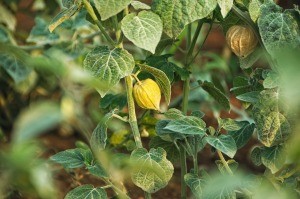
Ask a QuestionHere are the questions asked by community members. Read on to see the answers provided by the ThriftyFun community or ask a new question.
I bought a plant called golden berry. The assistant said it was a sort of tomato, but the fruit is enclosed by a papery shape, looks like a cape gooseberry. If it is are they edible? Any advice welcome.
From the information I can find, the golden berry and cape gooseberry are interchangeable names for the same type of plant. It is edible and can be used in various ways such as jams and pies and as fresh fruit in salads.
It appears your plant is a real "super-food" and as luck would have it - it may even taste good!
Gooseberries can have their foliage ravaged by the gooseberry sawfly larvae. Check for small caterpillars. If found, treat with an insecticidal soap or manual removal methods.